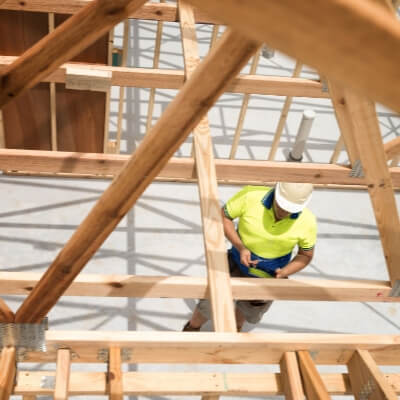Understanding construction insurance
- The construction industry presents diverse and shifting risk profiles to insurers, brokers and risk managers
- By applying a consistent risk framework, brokers can help customers identify and understand the risks they face – and how to treat those risks
- Adequate risk responses and insurance protects principals, builders, and sub-contractors
While some categories of insurance, such as property or motor vehicle insurance, operate primarily under the influence of the insurance cycle or industry, other classes, such as marine, aviation, construction and professional indemnity, are also impacted by the behaviours and trends of the industry they protect.
Construction insurance specifically has a diverse set of risk profiles with overlapping exposures and therefore requires significant input from customers, brokers and insurers to ensure the risks faced are adequately covered.
What does construction insurance cover?
“A construction insurance policy insures a contract between two individuals for the delivery of plans or designs for physical assets that will exist by the end of the project,” explains Matt Boon, Head of Underwriting, Heavy Industries for QBE Australia Pacific.
It usually covers two distinct phases – the construction phase (during which the building is being built) and the maintenance phase (which provides cover for loss arising from defects originating during the construction period but manifesting during the maintenance period).

“A construction site is a very dynamic environment, made up of dozens of small mini projects all contributing to the overall plan,” says Boon.
“This means there are often multiple specialist trades on site at any one time. Each has their own time and financial pressures to deliver a quality project, thus any incident on site could have significant flow-on effects to multiple tradespeople.”
Construction insurance can provide protection for the following:
- Material damage: unforeseen loss to materials and workmanship required to execute on the completed contract.
- Physical loss or damage: to plant and equipment on site.
- Liability covers: third party property damage, third party bodily injury, and worker-to-worker injury.
The importance of risk management in construction insurance
Risk management is a critical part of every construction project, and it’s important the builder and insurer have a deep and thorough understanding of the risks faced on each project.
A four-step risk management framework can be used to help identify the risks faced on a construction project:
- Outline the activity: What is the activity that is taking place?
- Identify and analyse: What are the steps in the process, and what are the risks associated with each one? The number of items to assess will generally depend on the complexity of the activity.
- Grade: From there, each risk will be graded, based on the probability of an incident happening, and the severity should the incident occur.
- Treat: We will then choose the best course of action avoidance, improvement, transfer or acceptance of the risk.
“The key role through the whole process is investigation,” says Boon. “We don’t rely purely on a submission, we need to understand exactly what’s happening, where it’s happening and who’s doing it.”
Construction insurance risk management framework in action
“In the case of a typical knock down/rebuild project, we would generally look at all of the individual activities that would contribute to the construction of the new building,” says Boon.
The outline would cover the scope of the project, for example ‘demolition of existing dwelling and construction of new two-storey house’.
It would also include any specifics, such as who designed the plans, and any notable details regarding materials.
“Depending on the detail received, we may look into, for example, the predicted rainfall from the Bureau of Meteorology, or explore the property online,” says Boon.
To identify and analyse, we would break down the outline into individual activities to take the project to handover. This may include the erection of hoardings, demolition and excavation, to the erection of the building frame, the sub trades completing their work and fixtures and fittings being installed.
“For a complex construction project, you’d likely have a significant number of activities, some with sub activities,” says Boon.
Each risk is then detailed and graded on a scale of probability and severity, ranging from low to high, which helps determine the risk.

From there, a decision must be made by the builder on every individual risk. This could mean avoiding the activity altogether, improving the risk (maybe through the use of different processes or equipment), transferring the risk (to an insurer), or accepting the risk as part of the business.
“It will depend on the individual insured as to what their approach to treatment is,” says Boon. “Some will have higher risk acceptance, while others may avoid or risk transfer. The process for insurers begins when the builder wants to transfer the risk.”
From there, the insurer may decline the risk, accept the risk, improve the risk through endorsements or restrictions, or transfer the risk through reinsurance or co-line arrangements.
The outline would cover the scope of the project, for example ‘demolition of existing terrace and construction of new two-storey house’.
A consistent approach to construction risk
While the example of a residential property is relatively straightforward, the construction industry is broad and has a huge number of different types of projects and risks – which can vary based on many factors, including project type, geology, size, location, experience and insurance period.
Consequently, construction insurance can be a challenge for brokers and insurers alike.
By using a risk assessment framework, insurance professionals can simplify the process for construction customers, and help them manage their risks consistently and effectively.
For more construction risk insights, check out our latest Australian Construction Sector Outlook report.

